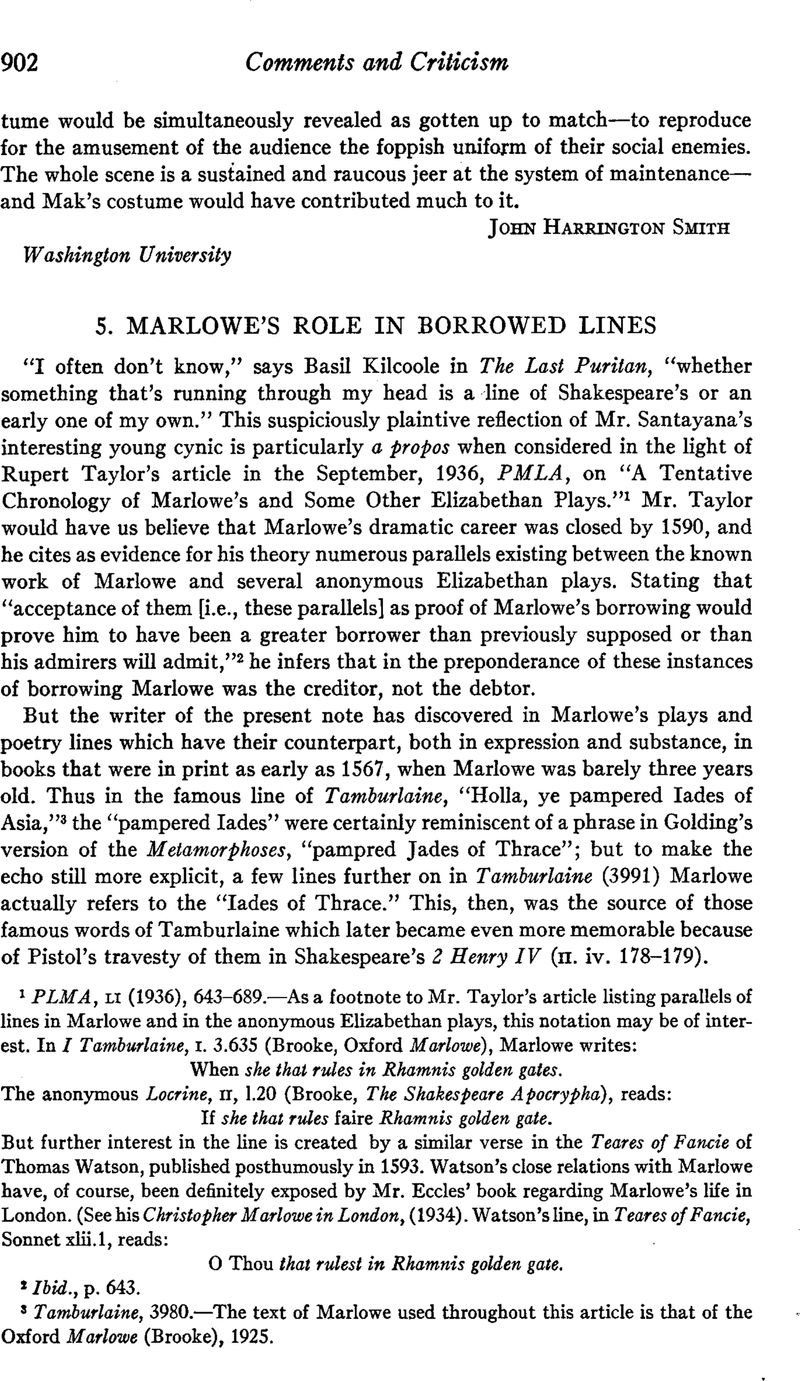No CrossRef data available.
Article contents
Marlowe's Role in Borrowed Lines
Published online by Cambridge University Press: 02 December 2020
Abstract

- Type
- Comment and Criticism
- Information
- Copyright
- Copyright © Modern Language Association of America, 1937
References
1 PLMA, li (1936), 643–689.—As a footnote to Mr. Taylor's article listing parallels of lines in Marlowe and in the anonymous Elizabethan plays, this notation may be of interest. In I Tamburlaine, i. 3.635 (Brooke, Oxford Marlowe), Marlowe writes:
When she that rules in Rhamnis golden gates.
The anonymous Locrine, ii, 1.20 (Brooke, The Shakespeare Apocrypha), reads:
If she that rules faire Rhamnis golden gate.
But further interest in the line is created by a similar verse in the Teares of Fancie of Thomas Watson, published posthumously in 1593. Watson's close relations with Marlowe have, of course, been definitely exposed by Mr. Eccles' book regarding Marlowe's life in London. (See his Christopher Marlowe in London, (1934). Watson's line, in Teares of Fancie, Sonnet xlii. 1, reads:
O Thou that rulest in Rhamnis golden gate.
2 Ibid., p. 643.
3 Tamburlaine, 3980.—The text of Marlowe used throughout this article is that of the Oxford Marlowe (Brooke), 1925.
4 Alwin Thaler, “Churchyard and Marlowe,” MLN, xxxviii (1923), 89–92.




